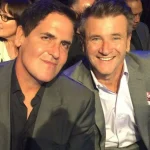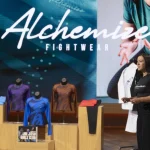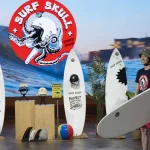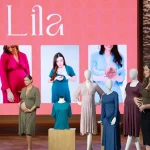
Forte3D walked on Shark Tank Season 17 Episode 6, with a mission to revolutionize the classical music industry. Alfred Goodrich and the co-founder, Elijah Lee, were joined by a Grammy award-winning cellist, Mike Block, as the Chief Musical Advisor.
They pitched their one-of-a-kind innovation to build high-quality string instruments like the cello and violin using 3D printing technology.
Innovation Meets Musical Craft
Forte3D is unlike any other typical instrument-making company, as its mission was to amalgamate traditional luthiery with today’s high-tech engineering.
Moreover, the instruments designed by the brand were made up of carbon and fiber, high-grade polymer. These materials make the cello lighter, easier to carry, and more resilient.
To develop a mix of 3D technology and traditional wooden instruments, the founders retained the key elements. Fingerboards, soundposts, bridges, and tuning pegs were used while designing the instruments to ensure that they sound exactly like classical instruments.
The most impressive point during the pitch was that the core structure of these string instruments can be built in hours. Hence, this makes the production faster, along with cost efficiency.
The cherry on the cake was the cost of their cello compared with traditional wooden instruments.
The Pitch That Won Over the Sharks
On the Tank, Alfred, Elijah, and Mike came in asking $250K in exchange for 10% equity, which would value the brand at $2.5 million. However, after the negotiations between the Sharks were done, they struck a deal with Lori Greiner, of $250,000 for a 16% stake in the brand.
Here’s how the pitch played out:
1. Musical Demonstration
The Grammy award-winning cellist played the 3D printed cello in front of the Sharks, building a powerful moment on the Tank. Sharks, including Daniel Lubetzky claimed that it was the best pitch he had ever seen in the history of Shark Tank.
2. Performance vs. Cost
Alfred Goodrich, the founder of Forte3D, took the plunge and shared that their cello only costs around $800 to make, while it retails for $3000. Unlike any other traditional wooden cellos, it can cost around $20,000 to $100,000.
3. Scalability
Kevin O’Leary was concerned about the size of the string instruments market and wanted a clear picture. While at the same time, Alfred responded that the global market size of only string instruments is worth $7 billion.
4. Customization
Forte3D did not just produce string instruments; instead, they also allowed customization based on the musician’s input. With the help of UV printing, professional cellists, students, and schools can add colors, designs, and artworks of their own choice.
5. Travel-Friendly
Their cellos are lighter than any other cellos made using wooden material. These instruments are way easier to transport, as Alfred jokingly mentioned, “light enough to check under a plane.” Indeed, it is a huge advantage for touring musicians.
Lori Greiner was perked up by the amalgamation of engineering, business model, and artistry all at the same time. Kevin and Lori offered deals to the founders of Forte3D. The final deal was secured with Lori Greiner for $250K in exchange for 16% equity.
Why the Deal Matters
This wasn’t just a win for Forte3D; instead, it was a statement about the future of musical instruments.
- Ensuring accessibility: They lowered the retail price of string instruments, especially the cello, from $20,000 to $3000. Consequently, Forte3D makes it very easy for students, schools, educators, hobbyists, and even professional cellists to afford it.
- Durability: These instruments are not vulnerable, so they can be protected from any damage, such as changes in temperature, transport, and humidity.
- Scalability and customization: The business can produce these instruments faster, along with customizations. Thus, it opens doors to a niche market.
What Has Happened Since Shark Tank?
After securing a deal with Shark Lori Greiner, Forte3D started growing and building customer traction, especially in sales.
- Forte3D’s weekly revenue jumped 20 times after the Shark Tank episode aired, as per the Delco Today report.
- The business’s string instruments are being used by musicians and players in the Philadelphia Orchestra. This signals the fact that professional musicians liked the durability and sound of the 3D printed cello.
- In one of Forte3D’s blogs, the founder shared that their cellos can be adjusted to the string height.
Challenges and Opportunities
Even with success, Forte3D faces typical startup hurdles, and some unique ones too.
Challenges
- Market Adoption: Convincing the professionals and seasoned players to switch the instruments they have been using for years is a tough task. Many luthiers argue that wood has its own prestige, and no new invention can match the tonality.
- Production Scaling: Most importantly to manage the scalability and high-quality production is a challenge for a growing brand.
- Sales Channels: The channel of distribution for such premium quality instruments requires educational institutions, professional musicians, and orchestras. These channels demand demos, word-of-mouth, and trust.
Opportunities
- Educational Partnerships: Music schools and conservatories could be huge customers for affordable, durable instruments.
- Touring Musicians: Lightweight and sturdy instruments could become a go-to for musicians who travel a lot.
- Customization: Wealthy musicians, influencers, or orchestras might pay a premium for custom designs. Forte3D’s UV-printing capability is a major differentiator.
- International Expansion: In countries where classical music education is growing, affordable string instruments could open up entirely new markets.
Takeaway: Why Forte3D is Important
Forte3D is a symbol to reflect how modern technology can use art, along with a mission to make cellos, violins, and other string instruments affordable.
Music education is often inaccessible due to the high cost. Also, musicians can choose what type of finish they want: a traditional wooden finish or a custom-printed design. This freedom to customize and create your own cello rarely exists in the music world.


















